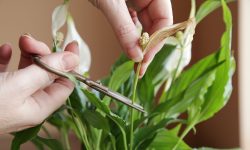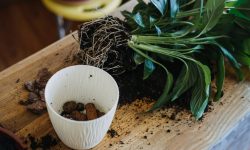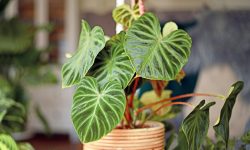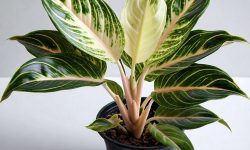Camellias are like winter’s secret garden — bursting into bloom when most other flowers sleep. Their elegant, rose-like petals brighten up the quiet months with shades of white, pink, and red, offering a quiet grace to gardens across the country. But knowing when camellias bloom is the key to enjoying their full seasonal magic.
From fall’s first crisp air to the gentle promise of early spring, camellias follow their own bloom rhythm. Whether you grow them in the warm South or the misty Pacific Northwest, each variety unfolds at a unique time. This guide will walk you through the blooming seasons of camellias by type and region, so you can plan your garden for continuous, breathtaking color.
Understanding Camellia Bloom Times
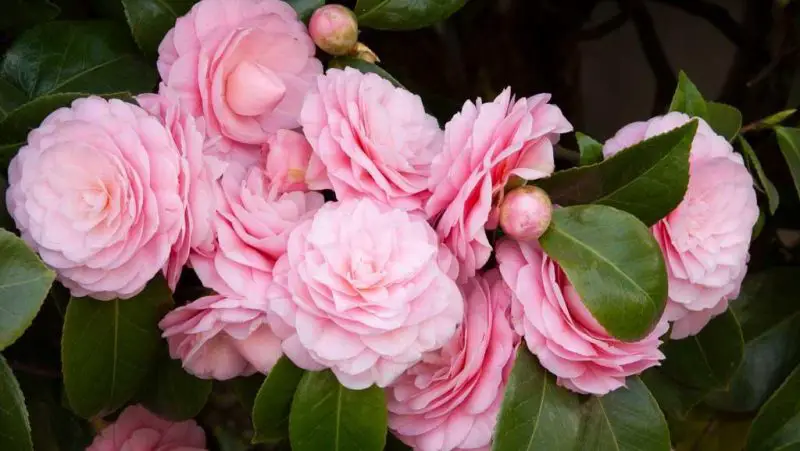
Species-Specific Bloom Patterns
Camellia bloom times vary widely depending on the species and cultivar, each adapted to different climates and ecological niches.
Camellia sasanqua is known as the earliest bloomer, often flowering from late fall through early winter (October to January). This species evolved in southern Japan’s milder climates and thrives in full sun to light shade. Its flowers tend to be smaller and more delicate, but they bring much-needed color when few other plants bloom. Sasanqua camellias also have a naturally open growth habit, making them excellent for hedges or espalier.
Camellia japonica, the most widely cultivated species, blooms from mid-winter to early spring (January to April). These camellias feature larger, often more ornate blooms with a wide color palette ranging from deep reds to pure whites. Japonicas prefer partial shade and cooler, sheltered spots because their buds can be damaged by strong winter winds or frost. Because of their timing, japonicas provide vibrant floral interest during the coldest months.
Camellia reticulata blooms latest, generally flowering in late winter to early spring (February to April). This species is prized for its exceptionally large and showy flowers, often with complex petal structures. Native to warmer, subtropical areas, reticulatas require more warmth and space to thrive and usually need careful siting in colder regions. Their late bloom fills the gap between japonicas and the onset of spring annuals.
Understanding which species you have allows you to anticipate bloom timing and create layered flowering displays by combining early, mid, and late bloomers.
Photoperiod and Temperature Sensitivity
Camellias are sensitive to both photoperiod (day length) and temperature, which together regulate flowering cycles. As days shorten in autumn, camellias enter a phase of flower bud induction where vegetative growth slows and buds start forming. This phase is enhanced by cool, but not freezing, temperatures, which act as a natural signal for dormancy.
If temperatures drop too quickly or fluctuate dramatically—such as early frosts or late warm spells—bud development can be interrupted. Early cold snaps can kill immature buds, leading to flower loss, while unseasonably warm periods can force buds to open prematurely, shortening bloom duration. Thus, camellias grown in climates with gradual seasonal transitions tend to produce more consistent and abundant flowers.
Photoperiod alone is not the only trigger; temperature plays a critical role. For example, in southern regions where days shorten but temperatures remain mild, camellias may bloom earlier or continuously. Conversely, in cooler northern areas, delayed warmth in late winter can push blooms later into spring.
Bud Development and Dormancy
The process of flower bud development in camellias begins months before blooming. Bud initiation typically occurs in late spring to early summer, during the plant’s active growth period. Once formed, buds enter a dormant state throughout summer and fall, slowly maturing in preparation for bloom.
During this dormancy, camellias require consistent soil moisture without waterlogging, as drought stress can cause bud drop. Excessive pruning or fertilization during summer can also remove developing buds or divert energy away from flowering structures.
Additionally, bud health depends on protection from heat stress and pests during this critical period. Buds damaged by hot, dry conditions or insect activity may fail to open properly in winter or spring. Gardeners should therefore apply proper cultural care—such as mulching, balanced fertilizing, and pest management—to support strong bud maturation.
Regional Impact on Bloom Times
Climate and microenvironment factors heavily influence camellia bloom schedules. In USDA zones 8 through 10, with mild winters and acidic soils, camellias generally perform best. For instance, in the Southeastern U.S., the gradual cooling of autumn encourages steady bud development and consistent bloom from fall to early spring.
In the Pacific Northwest, cooler, wetter conditions and later frosts can delay blooms. Protection from frost is vital to prevent bud damage and extend flowering. Conversely, urban heat islands or south-facing walls can create microclimates that allow earlier bloom by providing extra warmth and sunlight.
In colder zones (below USDA zone 7), camellias may bloom later or sporadically. Winter freeze and wind exposure can damage buds or cause dieback. Gardeners often grow camellias in containers to move indoors or provide frost protection. Cold-hardy hybrids developed for these regions have helped expand the planting range but still require careful siting.
Elevation, soil drainage, and shelter also matter: poorly drained soils stunt bloom quality, while sheltered spots reduce wind damage and temperature extremes. The interaction of these local factors means even within one region, bloom times can vary notably.
Summary
In conclusion, camellia bloom times reflect a complex combination of species genetics, environmental cues, and horticultural care. By understanding the natural cycles of each species and adapting cultural practices to local climate and microenvironments, gardeners can optimize flowering performance.
Selecting a mix of early, mid, and late-blooming varieties can create continuous floral interest from fall through spring. Careful attention to bud development periods, soil moisture, and frost protection ensures buds fully mature and open beautifully. Ultimately, success with camellias lies in syncing plant choice and garden care with the rhythms of nature to enjoy their stunning flowers year after year.
Main Types of Camellias and Their Bloom Periods
Camellias come in various species and cultivars, each with distinct bloom times suited to different climates and growing conditions. Understanding these types helps gardeners select the best varieties to achieve a prolonged and vibrant flowering season.
Camellia sasanqua
Camellia sasanqua is known as the earliest bloomer among common camellias. Its flowers typically appear from late fall through early winter (October to January). This species thrives in full sun to light shade and is more drought-tolerant than other camellias. The blooms are generally smaller and often fragrant, making sasanqua ideal for hedges, screens, or bonsai. Its early bloom period makes it perfect for starting the camellia flowering season in the garden.
Camellia japonica
Camellia japonica is the most widely cultivated species. It usually blooms from mid-winter to early spring (January to April). Japonica features larger, rose-like flowers in a wide range of colors from deep reds and pinks to pure whites. It prefers partial shade and benefits from protection against cold winds and frost to avoid bud damage. Its winter blooms provide essential color during the coldest months, making it a key focal point in many gardens.
Camellia reticulata
Camellia reticulata blooms later than other species, typically from late winter to early spring (February to April). Known for its large, showy flowers and striking colors, this species is less common but highly prized. It requires warmer climates and ample space to grow. Its late flowering period extends the camellia bloom season, adding vibrant color as other varieties finish blooming.
Camellia hiemalis
Camellia hiemalis is a group of newer hybrid cultivars bred for extended bloom periods and increased cold tolerance. These varieties can bloom from late fall through early spring, often overlapping with sasanqua and japonica blooms. Their diverse colors and prolonged flowering help maintain continuous camellia blooms in the garden.
Camellia sinensis
Camellia sinensis, the tea plant, flowers with small white blooms typically in late spring to early summer (April to June). While not commonly grown for ornamental purposes, it has ecological and economic significance. Its flowers are modest compared to ornamental camellias but still contribute to biodiversity.
Camellia oleifera
Camellia oleifera is primarily cultivated for its seed oil. Its white or pale yellow flowers usually bloom in late spring or early summer (May to July). Though less popular as an ornamental plant, it plays an important role in agriculture and industry.
Summary
The bloom times of camellia species reflect their diverse ecological origins and uses. Camellia sasanqua blooms earliest in fall and early winter, Camellia japonica and its hybrids bloom through mid-winter to early spring, and Camellia reticulata blooms latest, often into early spring. Tea and oil-producing camellias flower later in the season but are less common in ornamental gardening. Choosing the right camellia species and cultivars for your region and garden goals allows for a longer, more colorful flowering season and a beautifully layered garden display.
Regional Blooming Guide Across the U.S
Camellias’ bloom times vary significantly across different U.S. regions due to the diverse climates, seasonal temperature fluctuations, and microenvironment factors. Understanding these regional differences and the weather conditions that influence flowering can help gardeners optimize camellia care and bloom success.
Southeastern United States
The Southeast, including states like Georgia, South Carolina, Alabama, and parts of Florida, offers an ideal climate for camellias. Winters are generally mild and humid with minimal frost, allowing Camellia sasanqua to begin blooming as early as October, extending through winter. Camellia japonica and reticulata typically bloom from January through March.
The relatively stable and moderate winter temperatures enable longer bloom durations. However, sudden cold snaps or late-season frosts can damage developing buds, leading to flower loss. High humidity also favors fungal diseases like petal blight, which gardeners should monitor.
Pacific Northwest
In the Pacific Northwest—Washington, Oregon, and parts of northern California—the climate is characterized by cool, wet winters and mild summers. Camellias bloom slightly later here, with sasanqua varieties starting in November or December, and japonica peaking between February and March.
Frequent rainfall keeps soils moist but can also cause bud rot or fungal issues if drainage is poor. The cooler temperatures delay bud break compared to warmer regions, and occasional frosts require protective measures like frost cloths. Gardeners often plant camellias in sheltered locations to shield them from cold winds.
California
California’s diverse climate zones influence camellia blooming times widely. Coastal areas with a Mediterranean climate, such as the San Francisco Bay Area and Los Angeles, see sasanqua blooming in October or November, followed by japonica starting in December or January.
Inland valleys and foothills may experience colder winter nights and occasional frosts, which can delay blooming or cause bud damage. To combat this, gardeners often plant camellias near south-facing walls or under tree canopies to create warmer microclimates. Supplemental irrigation during dry winters helps maintain bud health.
Gulf Coast and Deep South
From Texas through Louisiana to Florida’s panhandle, camellias flourish in warm, humid subtropical climates. Bloom times here are among the earliest, with sasanqua flowering from mid-October, and japonica producing abundant blooms from December through March.
The long growing season and mild winters extend bloom duration, but high heat and humidity in late spring and summer require adequate irrigation and pest management. Occasional freezes, though rare, can damage tender buds. Coastal salt spray and hurricanes also pose risks, so camellias are best placed in protected garden spots.
Mid-Atlantic and Upper South
States such as Virginia, Maryland, and Tennessee experience colder winters with occasional hard frosts and snow. Camellia bloom times are compressed and tend to occur later, generally from late November through March, depending on winter severity.
Early frosts can kill flower buds before they open, reducing bloom abundance. Gardeners in these areas often choose cold-hardy japonica cultivars and plant camellias in sheltered locations to buffer temperature swings. Mulching and windbreaks help protect roots and maintain soil warmth during winter.
USDA Zones 6 and Below (Northern Regions)
In colder zones (6 and below), outdoor camellia blooming is challenging due to extended freezing temperatures. Gardeners commonly grow camellias in containers to move indoors or into greenhouses during winter.
When planted outdoors, only specially bred cold-hardy varieties bloom reliably, and bloom times shift later into spring, typically March to April. Frost damage to buds is a major concern, and wind exposure can cause desiccation. Supplemental heat and frost protection extend bloom viability in these zones.
Weather Factors Affecting Regional Bloom Times
Temperature: Gradual cooling in autumn promotes flower bud initiation. Sudden freezes or temperature fluctuations can damage buds or disrupt bloom cycles. Warmer winters generally lead to earlier blooms but sometimes shorter flowering periods.
Frost and Freeze Events: Frost damage is a primary factor limiting bloom in northern and higher elevation areas. Frost can kill immature buds, leading to poor flower production. Protective measures such as frost cloths, microclimate selection, and site sheltering are essential in vulnerable zones.
Rainfall and Humidity: High moisture supports healthy growth but increases fungal disease risk. Poor drainage can cause root rot and bud drop. Regions with wet winters require well-drained soil and vigilant disease management.
Sunlight and Microclimates: Exposure to morning sun and afternoon shade optimizes bud development and reduces heat stress. Walls, buildings, and natural windbreaks create microclimates that can extend or advance bloom times by mitigating cold or heat extremes.
Summary
Camellia bloom timing is a delicate balance between species genetics and the local climate’s influence. By recognizing how regional weather patterns such as temperature trends, frost risk, and moisture levels affect camellia flowering, gardeners can tailor site selection, variety choice, and care practices. This understanding ensures optimal bloom performance and the longest possible flowering season across the diverse climates of the United States.
Tips to Maximize Bloom Time
Maximizing the bloom time of camellias requires a combination of proper plant selection, cultural practices, and environmental management. By following these key tips, gardeners can encourage abundant flowering and extend the period during which their camellias grace the garden with color.
Choose the Right Varieties for Your Region
Selecting camellia varieties that are well-suited to your local climate is the first step toward maximizing bloom success. Early-blooming types like Camellia sasanqua thrive in warmer, sunnier climates and can start flowering in the fall, while Camellia japonica and Camellia reticulata perform better in areas with cooler winters. Researching cultivars known for disease resistance and cold hardiness also helps reduce bloom loss due to environmental stress.
Provide Optimal Sunlight and Location
Camellias generally prefer morning sun and afternoon shade, which helps buds develop without excessive heat stress. Planting camellias in sheltered locations, such as near south-facing walls or under tree canopies, creates favorable microclimates that protect from cold winds and temperature extremes. Avoiding full, harsh afternoon sun prevents bud burn and premature flower drop.
Maintain Proper Soil Conditions
Well-drained, acidic soils rich in organic matter promote healthy root development and nutrient uptake, both critical for flower production. Camellias do not tolerate waterlogged or alkaline soils. Incorporating mulch helps retain moisture, regulate soil temperature, and suppress weeds, all of which indirectly support longer bloom periods.
Water Consistently but Avoid Overwatering
Regular watering, especially during dry spells and bud development periods, prevents drought stress that can cause buds to abort. However, overwatering or poor drainage may lead to root rot and fungal diseases that compromise bloom health. Monitoring soil moisture levels and adjusting irrigation accordingly maintains ideal hydration.
Fertilize at the Right Time
Applying fertilizers formulated for acid-loving plants after the main bloom period supports the development of healthy buds for the next season. Avoid fertilizing in late summer or fall, as excessive nitrogen at this stage can encourage leafy growth at the expense of flower buds. Balanced feeding promotes strong, sustained flowering.
Prune Thoughtfully
Pruning camellias immediately after flowering encourages bushier growth and the formation of next year’s flower buds. Avoid heavy pruning in late summer or fall, which can remove or damage developing buds. Selective thinning also improves air circulation, reducing disease pressure and supporting healthier blooms.
Protect Against Frost and Extreme Weather
In regions prone to frost or sudden cold snaps, covering camellias with frost cloth or moving container-grown plants indoors during extreme weather protects delicate buds. Site selection away from frost pockets and applying mulch to insulate roots further minimizes cold damage, ensuring more flowers survive to bloom.
Monitor and Manage Pests and Diseases
Insect pests like scale and aphids, as well as fungal diseases such as petal blight and root rot, can reduce bloom quality and quantity. Regular inspection and early treatment with appropriate horticultural oils or fungicides help maintain plant health and maximize flowering potential.
Common Blooming Problems and Their Fixes
Camellias are beautiful plants but can face several issues that affect their flowering quality and quantity. Understanding the causes and remedies is essential for maintaining a vibrant and lasting bloom season.
Flower Bud Drop
Flower buds often drop prematurely due to environmental stress such as inconsistent watering, either drought or overwatering, sudden temperature changes, or insufficient light. Additionally, pest infestations and fungal infections can damage the buds. To address this, gardeners should maintain regular, balanced watering to keep the soil evenly moist without waterlogging. Protecting plants from abrupt temperature fluctuations by placing them in stable environments helps preserve buds. Applying fertilizers rich in potassium and phosphorus encourages bud development, while monitoring and treating pests or diseases early prevents further damage.
Flower Buds Fail to Open
Sometimes buds form but never open, commonly caused by frost damage, excessive cold, or inadequate sunlight exposure. Over-fertilization with nitrogen can also result in lush leaf growth at the expense of flower development. To fix this issue, gardeners should protect camellias from frost using covers or by relocating potted plants indoors during cold snaps. Planting camellias in areas that receive morning sun and avoiding deep shade supports healthy bud opening. Adjusting fertilization schedules to limit nitrogen in late growth stages and instead using phosphorus-rich fertilizers promotes blooming.
Poor Flower Production
Low flower production often stems from nutrient deficiencies, especially a lack of flowering stimulants, or from unsuitable soil conditions like alkaline pH or poor drainage. Improper pruning timing can also reduce flower bud formation. Gardeners can improve bloom by applying acid-loving plant fertilizers after flowering, improving soil organic matter and drainage, and avoiding heavy pruning during late summer or fall to preserve developing buds. Pruning just after flowering encourages new growth and increases bud formation for the next season.
Bud Blast
Bud blast refers to buds drying out, wilting, and falling off before opening, typically caused by water stress, excessive heat, or pest damage. Harsh sunlight and strong winds can also physically damage buds, causing them to “burn.” To mitigate this, consistent soil moisture must be maintained without overwatering. Planting camellias in locations with partial shade protects buds from intense afternoon sun. Windbreaks or sheltered planting sites reduce damage from strong winds. Regular pest monitoring and timely treatment protect bud health.
Petal Blight and Other Fungal Diseases
Petal blight causes brown spots and rapid decay on flowers, thriving in humid, poorly ventilated environments that favor fungal growth. To control fungal diseases, camellias should be planted in well-ventilated areas with good air circulation. Removing infected flowers and leaves promptly prevents the spread of disease. Fungicide applications during wet seasons help suppress fungal outbreaks. Avoiding overhead watering reduces moisture on flowers and leaves, limiting fungal development.
Frequently Asked Questions (FAQ) About Camellias Blooming Time
Why is my camellia not blooming this year?
There are several reasons why a camellia might fail to bloom. Common causes include improper pruning timing, excessive nitrogen fertilization that encourages leaf growth over flower production, inadequate sunlight, and environmental stress such as drought or extreme temperatures. Additionally, flower buds can be damaged by late frosts or pests. To encourage blooming, prune camellias immediately after flowering to allow new bud formation, provide balanced fertilizer with higher phosphorus content, ensure the plant receives morning sun with afternoon shade, and protect buds from frost and pests. Regular monitoring and proper watering also support healthy flower development.
When is the best time to prune camellias to maximize blooms?
The ideal time to prune camellias is right after their flowering period ends, usually in late winter or early spring depending on the species and local climate. Pruning too late in the season, especially during summer or fall, can remove developing flower buds and reduce bloom for the next cycle. Light pruning and shaping after bloom helps stimulate new growth and bud formation, while removing dead or crowded branches improves air circulation and overall plant health.
How can I protect camellia buds from frost damage?
Frost damage is a major cause of flower bud loss in camellias, especially in cooler climates. To protect buds, cover the plants with frost cloths or blankets during cold nights. Container-grown camellias can be moved indoors or into sheltered locations. Planting camellias near walls, fences, or under tree canopies creates warmer microclimates that buffer cold winds. Applying mulch around the base insulates roots and helps maintain consistent soil temperatures. Avoid fertilizing late in the season, as new tender growth is more vulnerable to frost.
What soil conditions are best for healthy camellia blooms?
Camellias prefer well-drained, acidic soils with a pH between 5.5 and 6.5. Soils rich in organic matter improve moisture retention and nutrient availability, supporting strong root systems and flower development. Poor drainage or alkaline soils can lead to nutrient deficiencies and root stress, resulting in poor flowering or leaf yellowing. To optimize soil, amend with compost or pine bark mulch, and test soil pH regularly. Applying fertilizers formulated for acid-loving plants also supports healthy blooms.
How often should I water camellias to encourage flowering?
Consistent moisture is important for camellias, particularly during bud formation and bloom development. Water deeply but infrequently, allowing the topsoil to dry slightly between watering to prevent root rot. During dry spells or hot weather, increase watering frequency to reduce drought stress, which can cause buds to drop. Mulching helps conserve soil moisture and regulate temperature. Avoid overhead watering that wets flowers and leaves, which can promote fungal diseases.
Conclusion
Camellias reward gardeners with stunning, long-lasting flowers, but timing their bloom requires a blend of knowledge and attention. By understanding the differences among varieties and how local climates influence flowering schedules, you can plan a garden that offers beauty from fall through spring. With thoughtful planting and care, camellias can brighten your landscape when little else dares to bloom.

